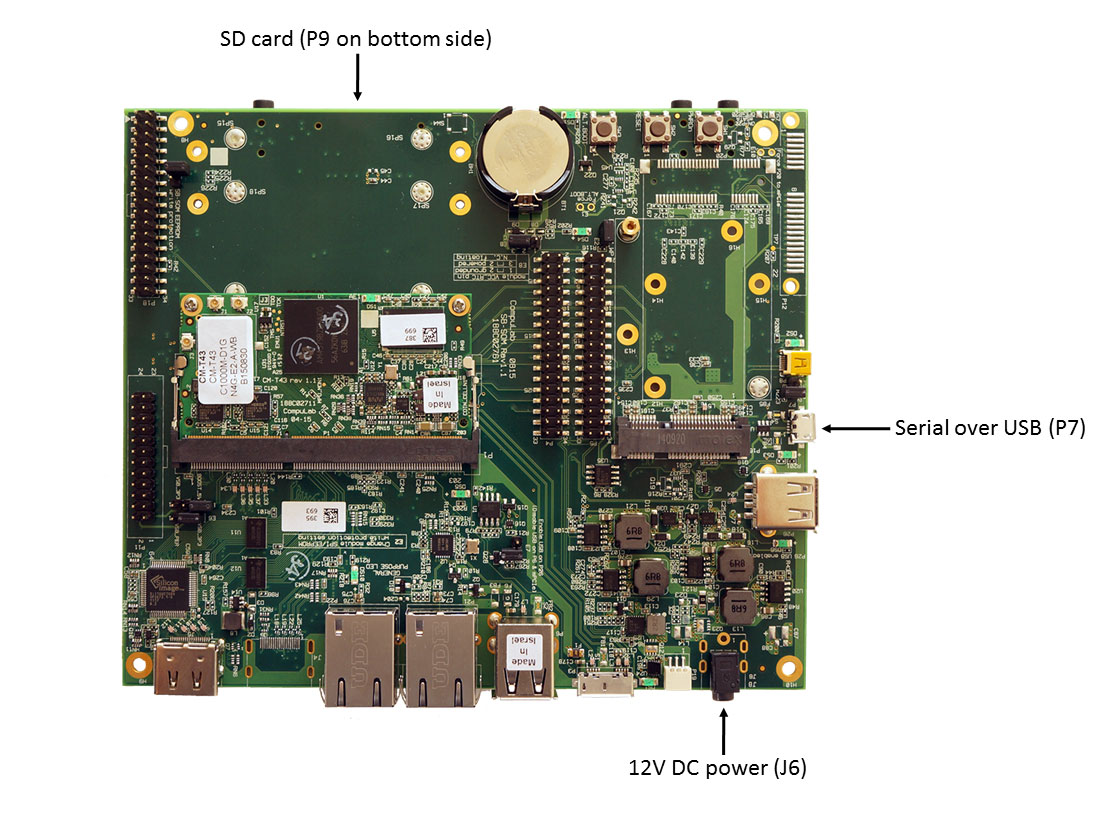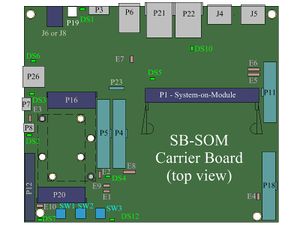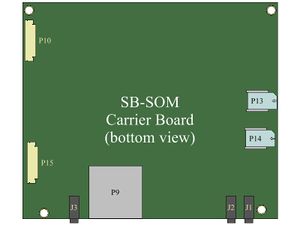Difference between revisions of "CM-T43: Evaluation Kit: Getting Started"
| Line 1: | Line 1: | ||
| − | + | [[Image:CM-T43-eval-kit-quick-setup.jpg]] | |
| − | [[Image:CM-T43-eval-kit-quick-setup.jpg | + | |
| − | |||
[[Image:SB_SOM_topview2.jpg|thumb|right|alt=SB-SOM top view|<div align="center">SB-SOM top view</div>]] | [[Image:SB_SOM_topview2.jpg|thumb|right|alt=SB-SOM top view|<div align="center">SB-SOM top view</div>]] | ||
[[Image:SB_SOM_bottomview2.jpg|thumb|right|alt=SB-SOM bottom view|<div align="center">SB-SOM bottom view</div>]] | [[Image:SB_SOM_bottomview2.jpg|thumb|right|alt=SB-SOM bottom view|<div align="center">SB-SOM bottom view</div>]] | ||
Revision as of 14:08, 1 May 2016
System setup
CM-T43 evaluation kit contains an SD card preloaded with Debian Linux image for CM-T43.
- Insert the evaluation kit SD card into the SD/MMC/SDIO socket P9 until you hear a clicking sound.
- Make sure jumpers E3 and E1 are not populated (default state).
- Connect the standard USB cable (included) between your host PC and the evaluation kit micro-USB2.0 connector P7.
- On your computer, start a terminal emulation program (such as HyperTerminal) with the following serial port settings: 115200 baud rate, 8 data bits, 1 stop bit, no parity, no flow control.
Starting the system
- Connect the DC 12V power supply adapter (included) to J6.
- Follow the messages in your terminal emulator program until you see the linux login prompt.
- NOTE: in case no messages appear in your terminal emulation program, please refer to the detailed USB console guide.
- Use the credentials below to login.
- username: root
- password: 111111


